Few things are as synonymous with Spanish culture as tapas, and we’re here to help you discover the best tapas in Barcelona.
The origins of tapas are steeped in mythology. There is the story of the ailing King Alfonso X, known as El Sabio or The Wise, who was nursed back to health on a diet of wine and tiny morsels. Delighted with the remedy, he ordered that everyone in Castilla should embrace this curative new diet.
Nonsense, others claim! The wise king decreed that taverns serve a snack with each glass of wine to prevent drunken brawls. So, tapas began as a civic, peace-keeping measure!
This article may contain affiliate links that provide commission on purchases you make at no extra cost to you. As an Amazon Associate I earn from qualifying purchases.
What does Tapas mean?
None of this, however, explains the origin of the name. The word tapa means lid. Many claim it derives from the old practice of placing a slice of ham on the glass to keep pesky flies from falling into the wine.
One story involves a visit by King Alfonso XIII to Andalucia. However, in this case the cause for concern wasn’t the flies, but the flying sand. Afraid the strong wind would sweep the beach into the royal glass, the innkeeper covered it with a slice of ham.
The king thought this ingenious, ate the ham, drank the wine and ordered another round, but this time with a different tapa (lid)!
Tapas traditions
The fact that these legends play out in Castilla or Andalucia is no coincidence. Both are famous for their tapas tradition: el tapeo or strolling with friends. Stopping at different places for a drink and sampling the house specialty is very popular.
Traditionally, tapas were simple (olives, cheese, ham) and on the house when you ordered a drink. Now, their rise in popularity resulted in a proliferation of tapas styles.
In Castilla, typical tapas include callos (tripe), potato omelette or croquettes. Andalusian tapas are far more seafood oriented: cuttlefish, pescaito frito (tiny fried fish), prawns, shrimp omelette.
The Basques have a tradition of their own. Here tapas are called pintxos and consist of a small slice of bread with different toppings, usually held together by a toothpick. Going from bar to bar sampling pintxos is one of the most social and entertaining ways of eating in San Sebastian.
Tapas recommendations in Barcelona
Although tapas are not a typically Catalan tradition, the practice has become popular over time. Nowadays you’ll find all sorts of tapas restaurants in Barcelona. Authentic bars where locals pop in for a drink and a tapa, or creative restaurants that have transformed tapas into the centrepiece of their dining experience.
Finding tapas in Barcelona is easy. Finding good tapas in a place that doesn’t feel like a tourist trap is trickier. I have my three stalwarts – deeply local places where the food is good and the atmosphere unique: El Vaso de Oro, Quimet Quimet, and Bar Ramón.
El Vaso de Ora – beer and hearty tapas
El Vaso de Oro is in Barceloneta, the city’s old fishing quarter, and it takes its seafaring association very seriously. From the waiters’ white nautical uniforms with gold trim to the wooden lamps shaped like ships, El Vaso de Oro embraces the maritime identity of the neighbourhood.
Even the layout – the narrow wooden bar where you have to squeeze past other patrons – recalls the confined cabins of a boat. In fact, there’s only one thing un-sea-related: the food.
Sure, the tapas include the odd seafood item, but mostly it’s robust, hearty, inland fare. Chorizo, morcilla and other sausages, cured ham, foie, sirloin steak with foie (the house specialty). Manchego cheese, salted almonds, pimientos del padrón (slightly spicy green peppers and pretty much the only vegetable on the menu).
The crowd matches the food. Robust, hearty, (mostly) men over 50 with bushy beards. It’s a beer-drinking crowd of local regulars that come for good, no-nonsense food.
The bar serves wine, but one look at the shelves of old, ceramic beer mugs and the motto el manantial de la cerveza or the beer spring on the coasters and you know what the beverage of choice is around here.
Word has spread and you’ll see a smattering of younger patrons, a few foreigners too. They’ve discovered that when it comes to delicious meat-and-potatoes-style tapas, El Vaso de Oro in Barcelona is one of the best bets around.
El Vaso de Oro, Carrer Balboa, 6 – 08003 Barcelona; 93 319 3098
Quimet Quimet – vermouth and local delicacies
Just like El Vaso de Oro, Quimet Quimet is a true tapas bar. Here you stand, or perch on a stool, have a drink, eat a tapa and move on to the next place.
Located in the Poble Sec in Barcelona, Quimet Quimet is even smaller and most evenings, patrons literally spill out onto the street. Sometimes it gets so crowded, you’re rubbing shoulders with strangers. But it’s absolutely worth it.
“Do the vermouth”
At Quimet Quimet, tapas meet one of Catalunya’s finest traditions: fer el vermut literally: “do the vermouth”. Catalunya is known for its excellent vemouths, and Quimet Quimet has a delicious house variety. It’s dark, herbal, spicy and just sweet enough.
My favourite, however, is from the village of Falset in the Priorat. A fresh, light vermouth the colour of a sunset.
The tradition of the vermut isn’t just about the beverage though. Traditionally, it was a lunchtime aperitif. The vermouth was prepared with a splash of soda or sifó and a slice of orange or an olive. It’s served with olives, crisps, anchovies, salted almonds, clams or cockles.
What to order
Quimet Quimet serves all of these local delicacies…and so much more. The montaditos (another variation on small slices of bread topped with different ingredients) are exquisite. Try Salmon, yogurt and honey; prawns and roasted red pepper; smoked sardine and sun-dried tomato, or the cheese and cured meat assortments.
Quimet Quimet is also a paradise for wine lovers and a great place to discover Catalunya’s wine regions. Not just the commercially well-known El Penedés, but others like the Priorat, Montsant, Terra Alta or Empordá-Costa Brava. Although more obscure, these official appellations of origin grow interesting varieties and produce some of the Catalunya’s finest wines.
Quimet Quimet, Carrer del Poeta Cabanyes, 25 – 08004 Barcelona; 93 442 3142
Bar Ramón – high energy and gourmet tapas
As much as I love the high-spirited energy of a bustling tapas bar, sometimes the occasion calls for a different dining experience. Sitting down to a meal, however, doesn’t mean renouncing tapas.
Bar Ramón in Sant Antoni is without a doubt one of Barcelona’s most original local spots. The restaurant is a curious mix of new and old, local and international, creative and traditional. In a way, it expresses the personalities of its owners, a brother and sister team.
At first glance, Bar Ramón looks like most good, local bars: unfussy furniture, a long bar, a glass display of cold tapas. Inviting, cosy, not flashy.
But then you hear the music – good classic rock and blues – and you notice the guitars on the walls and the photos of music legends. The colours, a little warmer and more vibrant than in most local bars and the aging, rock’n’roll regulars hanging out at the bar.
Bar Ramón really is a place to hang out. Once you sit down and order a glass of wine, a blanca (beer in a white mug) or a vermouth, the spirit of Ramón takes over and you’ll order food and talk to people until suddenly it’s past midnight.
Expect an eclectic crowd
The crowd isn’t just locals or aging rockers. All sorts of people love Bar Ramón, and they flock to this hole-in-the-wall spot from all over town and even further afield. They have one thing in common: they’re secret gourmets. You’d never guess how great the food is from Bar Ramón’s unassuming, unpretentious look.
The cold tapas are particularly creative. The other night, I had a salmon and apple pie, and roasted vegetables layered with flavourful, soft cheese. The hot tapas tend to be more traditional and offer a little journey to different corners of Spain.
Try Galician-style octopus, fried cuttlefish, grilled prawn and pineapple skewers (a little modern twist), roasted potatoes with an ever so slightly spicy Brava sauce, and the Catalan classic pa amb tomaquet or bread rubbed with tomato, olive oil, garlic and salt.
I really only have one piece of advice when going to Bar Ramón: bring a bunch of friends so you can order and try as many tapas as possible!
Bar Ramón Carrer Comte Borrell corner Tamarit; 93 325 0283
More Spanish pleasures
The Moorish charms of the Alhambra in Granada
Seafood on the beach – at the Chringuitos in Spain
The sweet taste of Horchata in Valencia
All photos by Aisha Prigann
This is a guest post* by Aisha Prigann who writes the BCNinternet Barcelona Blog about culture, leisure and tourism in Barcelona.
* More info on my policies page
This article is originally published at Heatheronhertravels.com

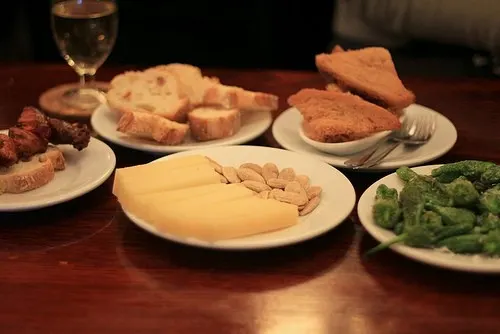
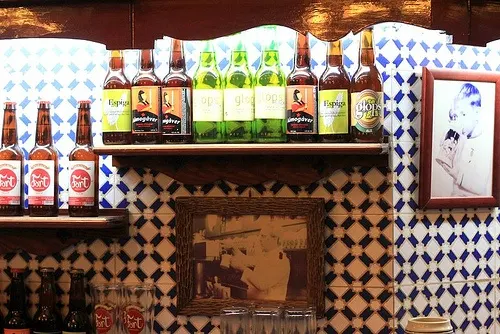
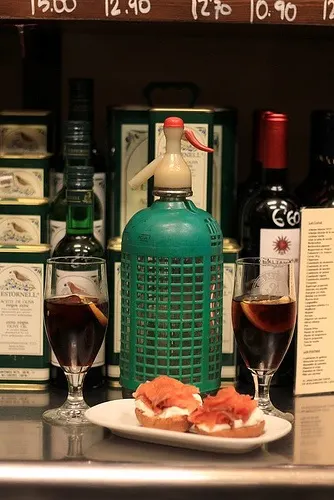
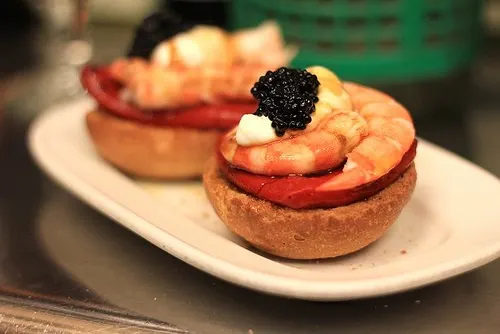
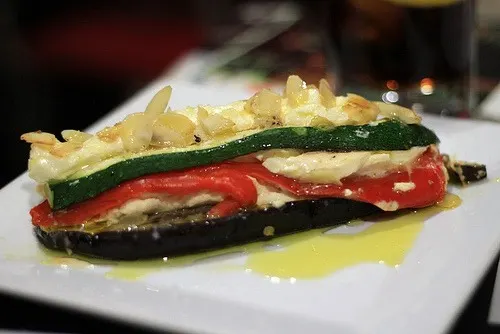
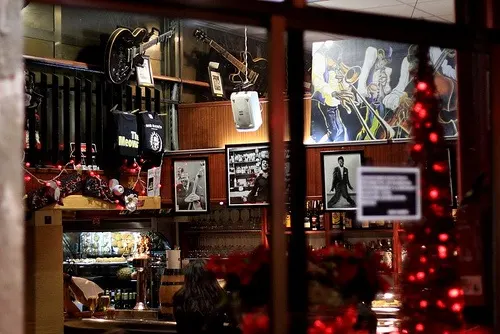

Kristina @ Barcelona
Monday 26th of October 2015
Hi Heather,
Your post makes me very hungry :) This is a good reference to all travelers who want to visit Barcelona.
Thanks Kris
brandy bell
Sunday 23rd of December 2012
i used a few of these recommendations two weeks ago when i was in barcelona -- truly good eats... and the cava- ahhh. hoping to return soon and complete the to-do list ;) thanks for picking these out, aisha- and for hosting them, heather!
Heather Cowper
Sunday 23rd of December 2012
@brandy so pleased you had some great tapas in Barcelona and found the recommendations helpful
opium mar
Thursday 1st of November 2012
Whats up very nice web site!! Man .. Beautiful .. Wonderful .. I will bookmark your blog and take the feeds additionally?I am satisfied to search out numerous useful info right here in the submit, we'd like develop extra strategies on this regard, thanks for sharing. . . . . .
Best tapas in barcelona « nothatswhatisaid
Thursday 20th of September 2012
[...] Best tapas in barcelona [...]
Heather
Wednesday 5th of September 2012
@Nico Thanks so much for your tip